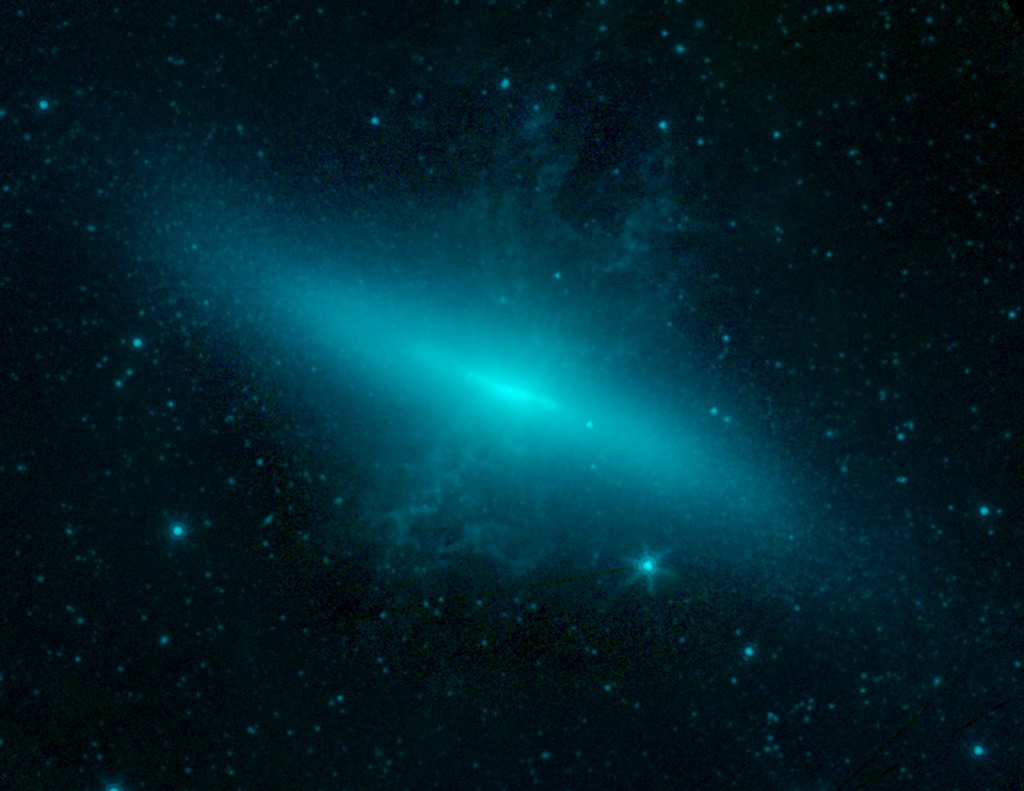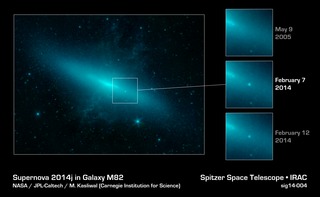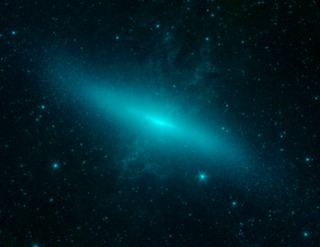
Credit: NASA/JPL-Caltech
Observation • February 26th, 2014 • sig14-004b
sig14-004b
The supernova SN 2014J is seen in this image near its peak brightness in the first week of February 2014. It appears as a faint star to the lower right of the central region of its host galaxy M82.
The new supernova is of a particular kind known as a Type Ia. This type of supernova results in the complete destruction of a white dwarf star-the small, dense, aged remnant of a typical star like our Sun. Two scenarios are theorized to give rise to Type Ia supernovas: In a binary star system, a white dwarf gravitationally pulls in matter from its companion star, accruing mass until the white dwarf crosses a critical threshold and blows up. Alternatively, two white dwarfs in a binary system spiral inward toward each other and eventually explosively collide.
Studying SN 2014J will help with understanding the processes behind Type Ia detonations to further refine theoretical models.
In the image, light from Spitzer's infrared channels are colored blue at 3.6 microns and green at 4.5 microns.
About the Object
- Name
- Messier 82 • M82 • NGC 3034 • Cigar Galaxy • SN 2014J
- Type
- Galaxy > Type > Spiral
- Galaxy > Type > Irregular
- Galaxy > Activity > Starburst
- Star > Evolutionary Stage > Supernova
- Distance
- 11,700,000 Light Years
- Redshift
- 0.000677
Color Mapping
| Band | Wavelength | Telescope |
| Infrared | 3.6 µm | Spitzer IRAC |
| Infrared | 4.5 µm | Spitzer IRAC |
Astrometrics
- Position ()
- RA =9h 55m 52.2s
- Dec = 69° 40' 46.9"
- Field of View
- 11.0 x 8.5 arcminutes
- Orientation
- North is up






